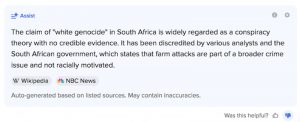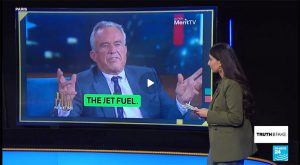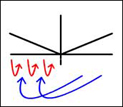“Nicaragua Betrayed” Summary— Chapter 12: The Bay of Pigs— A Fiasco
by Edward Ulrich
News of Interest.TV
February 18, 2011
This chapter describes the United States staging the “Bay of Pigs” invasion against Cuba from Nicaragua in 1961 while Somoza was chief of the Nicaraguan Army. It is explained how the United States intentionally caused the mission to fail by holding back key air support, resulting in Castro’s capture of eleven hundred prisoners and ensuring that Castro stayed in power.
Following are key points from the chapter:
— Anastasio Somoza mentions that the time period covered in his book is from the 1972 earthquake in Managua until the present (1980), but he needs to make an exception for explaining the role of Nicaragua in the “Bay of Pigs” invasion of Cuba in 1961, because it relates directly to the eventual overthrow of Nicaragua by Cuba.
— Anastasio’s father and his brother Luis were always staunchly anti-Communist, and they took part directly and indirectly in efforts to defeat Communism in Central America in cooperation with the United States. Leaders of the government of Nicaragua knew Castro was a Marxist long before that fact was acknowledged by the United States, and they attempted to sound the alarm but it went unheeded.
— In 1959, Anastasio Somoza was Chief of the Army and his brother Luis was President, and Colonel Robertson from the United States came to visit with Anastasio to tell him there was an operation in the works to overthrow Castro, and Anastasio was in agreement to help after he consulted with other leaders in the government.
— Somoza explains that shortly after Castro came to power, Che Guevara had sent wave after wave of guerrillas to Nicaragua who were captured and later released.
— Nicaragua’s conclusion to assist the U.S. was based on the fact that they realized the evils of Communism and they knew that unless they assisted their friend the United States, there would be nothing but trouble from Cuba. Somoza says, “Our decision, then, was in the best interest of Nicaragua, our people, and the United States of America. When those interests were served, we concluded, it had to be the right decision.” It was decided that Nicaragua would serve as a staging point for the invasion forces.
From pages 170 - 171:
As a military condition, I stipulated that the plans should go no further unless it was agreed that the Cuban airforce was knocked out before the actual invasion began. Unless this military step was taken, I knew the invasion force would not have a chance. With my own eyes I witnessed the effect of air control in the Costa Rican revolution of 1955. I saw an entire battalion completely bottled up because they did not have air support. With an invasion from the sea, it was essential that the enemy be deprived of air support. Colonel Robertson agreed with my evaluation and departed for the United States.
[Colonel Robertson] reported to me, and advised me that President Eisenhower agreed with my evaluation. Eisenhower was now well aware of the Cuban threat to the Western Hemisphere and was kept informed on each phase of the military planning.
— The operation had to be kept secret, and the location of the staging site had to be removed from cities or towns and be essentially uninhabited yet possess port and air facilities. Somoza says, “There aren’t too many places in the world which could meet all of those requirements. In Nicaragua, we had just such a location — Puerto Cabezas.” There was an airfield at this location, but it was not in good condition and it needed major repairs. All of those working to repair the site were required to stay for the duration of the week, and they didn’t know about the planned invasion of Cuba. “We prepared Puerto Cabezas for the influx of men, aircraft, and ships, and it was accomplished with total secrecy. Not one word leaked out. I was proud of our people.”
From pages 171-172:
We were up against another problem and that was time. Within a period of forty-eight hours, all troops, airplanes, and ships had to assemble, regroup, receive assignments, and move out as an invasion force ... the surprise air attack on the Cuban airforce was to be launched from Puerto Cabezas, whose code name in this operation was “Happy Valley.”
While all this was going on, I remember thinking that there wasn’t another country in all of Latin America which would have accommodated the United States to such a degree. This knowledge gave me a sense of pride. It meant two things: One, we shared a common ideology; and two, Nicaragua had unchallenged faith in the United States of America.
— Previously, JFK was about to be elected President, and Somoza met with Mr. Joseph Kennedy, the Patriarch of the Kennedy Clan in New York City, and Somoza thought him to be down to Earth and not pretentious. Kennedy invited Somoza to Washington for his son’s inauguration.
— While Somoza was in Washington D.C. for Kennedy’s inauguration, he had a personal meeting with Allan Dulles, the head of the CIA. The meeting with Dulles lasted for one and one-half hours. Somoza wanted to know if the plans for the operation were still on due to the change in Administrations, if Kennedy had been briefed on the operation, and if sufficient air power would be provided to knock out the Cuban airforce. Following is Somoza’s account:
When these questions were posed, Mr. Dulles said, “excuse me for just a moment.” He then went to an extreme end of his office where there was a telephone. He made a telephone call and was back in a few minutes. Dulles said to me: “I have just checked with the White House and everything is set.” I told him that was fine but I had to be sure. Mr. Dulles sat silent for a moment and I could readily see that he was deep in thought. I can see him now. He had a pipe in his hand and had his chair turned at an angle. I was observing every move he made, and he appeared to have decided on what he wanted to say to me.
He placed his pipe on the desk, rotated his chair so that we were facing each other, and said: “Now, General, what is it you want out of this?” My response was: “Nothing, Mr. Dulles, not a damn thing.” Then I pointed out to him that Nicaragua had always enjoyed an excellent relationship with the United States and that that relationship meant much to me and my country.
...
Upon returning to Nicaragua, I had another invitation and this one pleased me greatly. Chaing Kai-shek had invited me to visit with him in Taiwan. I happily accepted that invitation. The trip would take me to Taiwan, Japan, Korean, Hong Kong, India, Iran, Israel, and Italy.
...
Parenthetically, at the time Mr. Carter was planting peanuts, I was doing a lot of goodwill work for the United States and the Western World. ... I set out on that extended trip the day the invasion forces left Puerto Cabezas for Cuba.
— After Somoza had inspected the facilities at Puerto Cabezas he advised the political leaders of the area about the coming event. “I wish Americans today could have a view of those enthusiastic Nicaraguans. They were proud, through and through to be partners with the United States on such an important mission. ... As the time approached for the arrival of the invasion troops, I felt tense and excited. The only way you could reach Puerto Cabezas was by air or sea, and nothing was moving in or out. It was sealed off from the outside world, and, so far as I was concerned, there would be no foul-ups. There were none.”
From page 174:
Then they started to arrive by air, and the excitement mounted. These Cubans were on a mission of destiny and they felt it. One thousand and three hundred men arrived, all well trained, well equipped, and, to say the least, all eager to get on with the mission. The troop-carrying planes landed, one after the other, and in the darkness of night. It was closely coordinated, because then the ships began arriving in Puerto Cabezas. The combination of airplanes dropping out of the sky on tiny Puerto Cabezas, the arrival of ships in the harbor, and a knowledge of the importance of this mission made chills run up and down your spine. You could feel it with all the people who were there.
To add another dimension to the excitement, the bombers started arriving. Sixteen of seventeen B-26s arrived. These were the planes which would knock out the Cuban airforce— on the ground.
Also, there were tons of ammunition, rockets, and bombs. It seemed incredible that all these arms, weapons of war, and needed supplies could be assembled in one week. But it was done, and in total secrecy. Mr. Castro had no idea as to what was happening in Nicaragua.
It was important to me to be at Puerto Cabezas and make a final inspection. As I viewed the materials and visited with the men, my thoughts turned to the Normandy invasion. This, I thought, was no Normandy but to Latin America and the Western Hemisphere it could be just as important. I knew the threat of a Communist Cuba and, to me, Castro represented the same evil force as did Hitler. In the beginning no one took Hitler seriously, but Normandy was an exemplification of what happens when an evil man is taken too lightly.
— At Puerto Cabezas, Somoza had a conference with the three leaders of the invasion force, and all recognized that without control of the air, the mission was doomed, and they had all been assured of air support.
— During the final consultation with the American advisors, Somoza’s concern was first knocking out the Cuban air force. He mentioned that there would be issues with getting the 1,350 men off the beach with sixteen old, worn out planes when the Cubans had jet fighters. Also he become very worried when he learned the plan was to take the bombers in four different attack groups, which would have only four planes on the scene at any one time. “I told the Americans in no uncertain terms that unless the U.S. Navy came through with jet-fighter coverage, as promised, the mission would be a horrible failure. After that I went back and told [them] that the planning was bad and I didn’t think the invasion would be successful.”
— The next day Somoza took off for Los Angeles to kick off his tour of Taiwan and other countries, and it was the same day the invasion troops set off for their doomed mission. Following is Somoza’s account from page 176:
I was in Los Angeles when the first reports started coming in. The first reports stated that there had been an uprising in the Cuban airforce. That erroneous report most likely came about because the invasion aircraft were painted with a Cuban insignia. The news reports went on to say there was a revolution in Cuba. I was sweating blood and had a “gut feeling” that things had gone wrong.
The rest is history. The bombers actually did a pretty fair job in their surprise attacks, but Cuban jets did get airborne and made mincemeat out of these slow, cumbersome bombers. In the meantime, the U.S. aircraft carriers stood off Cuba and never launched their fighters. One fighter squadron, VA-34, known as the “Blue Blasters,” did get airborne but was prohibited from engaging the enemy. It has been reported that some of these American combat pilots were actually in tears. All was in readiness, but at the last moment, orders came from the White House to cancel fighter support for the invading Cubans. Only President Kennedy and his brother, Bobby, knew why this decision was made. It was a U.S.-planned and U.S.-financed operation and, in the end, it was a U.S. decision that led to disaster for the invasion force and permitted Castro to remain in power.
— The invasion forces landed and tried to move inland, but as soon as the airpower disappeared, Castro’s forces moved in with tanks, mortars, machine guns, and rockets, which trapped the invading forces so they couldn’t move. Castro took eleven hundred prisoners.
— After the first and second strike group took off for the invasion, the third was halted due to an order from Washington that the administration “wanted to test public opinion.” Somoza says, “My God, men were dying and the future of much of Latin America hung in the balance, and Washington wanted to test public opinion!”
— Since the situation became so desperate for the invading forces, Nicaragua decided it should send its small force of P-51s to their aid; however they had limited range, and it would be impossible to fly to Cuba and back without refueling. Permission was requested from the United States to refuel in in Key West, but amazingly the request was denied.
— It was confirmed that the invasion failed because of no fighter coverage, and Somoza sent Allen Dulles an urgent message that Castro should still not get off the hook, but he only received a noncommittal response.
— Somoza says, “Castro had not forgotten my participation and until this day he hasn’t. ... I was the butt of many of his vitriolic obscenities. Often times he said, ‘Somoza is a son of a bitch, and I’ll see him dead.’ He made a serious threat but, I’m sorry to say, he made good his threat. He didn’t kill me, but he played a significant role in killing my country. To me, that’s the same thing.”
From Pages 178-179:
The eleven hundred prisoners taken at the Bay of Pigs were put in Castro’s Communist jails. And the horrible tortures carried out on some of them were adequately publicized. But just one month after the invasion Castro himself started a movement to get them all ransomed by offering to set them free for five hundred bulldozers of the Caterpillar type, then worth twenty-eight million dollars. This led to crosscurrents of activity in the United States more tragic and confusing than had been the invasion itself. To start it off, a group of Cuban refugees formed a Cuban Families Committee, which did succeed in getting the most severely wounded prisoners released eventually on its promise to pay Castro $2,925,000.
But President Kennedy, apparently for political reasons, was determined to have all of these prisoners released by some more powerful and prominent civilian committee. This had to be done while he maintained the fiction that the U.S. government could have nothing to do with paying Castro anything that looked like indemnity; while he, President Kennedy, still maintained absolute control, through his brother Robert (the U.S. Attorney General), over all negotiations; while Castro was constantly increasing his price. The final result was a supreme effort during December of 1962 to complete the performance by Christmas. It now called for a very solid guarantee by a large enough insurance company, backed by a consortium of large banks, for the delivery of some fifty-three million dollars’ worth of drugs and medicines.
These drugs were listed and named by Castro in a lengthy memorandum, and calculated by him as to actual value well below the drug companies’ bottom published wholesale prices. Provision was also made for a secret but full spot checking of the drugs and medicines in that enormous consignment, by Castro’s agents sent over to Miami for that purpose. This was done, the bond was issued, and on Sunday, December 23, 1962, four planeloads of the more than one thousand prisoners had been landed in Florida.
Then Castro played the last card in his hand. He demanded immediate cash payment of the $2,925,000 still owed him, for the sixty wounded prisoners previously released, before he would let go of any more. So Robert Kennedy, awakened at five o’clock Monday morning over this matter, telephoned Richard Cardinal Cushing, Archbishop of Boston, who agreed to put up one million dollars. General Lucius Clay borrowed the remaining $1,925,000 at some bank on his own signature. By Monday afternoon the Canadian Consul’s office in Havana was able to assure Castro that those amounts had already been deposited to his account at a bank in Montreal. So, on Christmas Eve, 1962, the last of these prisoners was set down in Florida.
To bring the Bay of Pigs fiasco into proper focus and relate the release of all prisoners to the current situation in Nicaragua, consider this fact: There are eight thousand men and women of the Guardia Nacional behind barbed wire in Nicaragua today. They are political prisoners of a Marxist government; and, as things stand now, most of these men and women will probably die in prison. However, there has been no effort on the part of anyone in the United States to negotiate for their release, and you have eight times the number of imprisoned after the Bay of Pigs.
There is a parallel. The United States promised air support for the Bay of Pigs invaders. The air support was withheld and eleven hundred men were captured by a Communist government. In Nicaragua, the United States broke promises, treaties, and all agreements with my country. As a direct result, eight thousand men and women are imprisoned. How ironic that, in the one instance, the United States would successfully bargain for the release of all prisoners, and in the other, refuse even to acknowledge the fact that an entire army is imprisoned by a Communist government.
I can go one step further. If the United States had lived up to her commitment to the Bay of Pigs invaders, there would be no Castro on the scene today, and the Communists would not have Nicaragua.
Surely there is justice in this world of ours. But as of this moment, if it does exist, it is beyond the scope of my vision.
Purchase the book “Nicaragua Betrayed” from Amazon.com.








